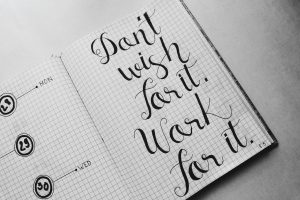Crafting a Winning Resume
As I embark on the journey of crafting a winning resume, I am met with the realization that a well-structured resume holds immense significance in the competitive job market. A polished resume serves as the gateway to presenting oneself as a qualified candidate, showcasing my skills, experiences, and achievements in a succinct and impactful manner.
When tailoring my resume to align with my career goals, I understand the importance of customization. Each job application presents a unique opportunity, requiring me to adjust my resume to highlight the specific qualifications and attributes that are most relevant to the role. By tailoring my resume to my career aspirations, I can effectively communicate my suitability for the position and capture the attention of potential employers.
To delve deeper into the specifics of creating a well-structured resume that resonates with my objectives, it’s essential to explore various resume formats and select the most suitable one based on my professional background and career goals. Whether opting for a chronological, functional, or combination resume, understanding the nuances of each format enables me to present my qualifications in the best possible light.
Equipped with a clear understanding of the significance of resume structure and the art of tailoring my resume to my career objectives, I am better prepared to navigate the job market with confidence and showcase my unique value as a candidate. Through diligent crafting and customization, I am poised to create a winning resume that propels me towards my professional goals.
Resume Format Basics
When it comes to creating a compelling resume, understanding the different resume formats is essential to tailor your document to the job you are applying for. Below, I will outline the three primary resume formats: chronological, functional, and combination.
Chronological Resume
The chronological resume format is the most traditional and widely used format. This format focuses on listing your work experience in reverse chronological order, starting with your most recent position and working backward.
| Section | Details |
|---|---|
| Header | Contact information |
| Summary | Brief overview highlighting your key accomplishments |
| Work Experience | List of previous jobs with dates, company names, and job titles |
| Education | Educational background including degrees, certifications, and institutions attended |
| Skills | Relevant skills that align with the job requirements |
| Other | Additional sections like certifications, professional affiliations, or volunteer work |
A chronological resume is well-suited for job seekers with a strong and continuous work history in the same field. It showcases career progression and demonstrates your growth and experience over time. If you want to see an example, check out our article on resume examples for a sample chronological resume template.
Functional Resume
The functional resume format focuses on your skills and qualifications rather than your work experience. This format is beneficial if you have employment gaps, are changing careers, or have relevant skills from various experiences.
| Section | Details |
|---|---|
| Header | Contact information |
| Summary | Skill-based summary highlighting your strengths |
| Skills | Categorized list of skills relevant to the job |
| Work Experience | Concise list of past employers emphasizing achievements and skills used |
| Education | Academic achievements and qualifications |
| Certifications | Relevant certifications or professional development courses |
A functional resume allows you to highlight your skills and abilities upfront, showing recruiters how your expertise aligns with the job requirements. It’s particularly effective for entry-level candidates or those with diverse skill sets. If you’re looking for a functional resume example, visit our article on resume examples for a sample template.
Combination Resume
The combination resume format, as the name suggests, combines elements of both the chronological and functional formats. This format highlights your skills and qualifications while also providing a chronological overview of your work experience.
| Section | Details |
|---|---|
| Header | Contact information |
| Summary | Overview of skills and achievements |
| Skills | Key skills and competencies relevant to the position |
| Work Experience | List of positions held with accomplishments and responsibilities |
| Education | Academic background and qualifications |
| Certifications | Relevant certifications or additional qualifications |
A combination resume is ideal for job seekers who want to showcase both their skills and work history. This format is versatile and allows you to emphasize your qualifications while providing a timeline of your professional experience. For a sample combination resume, you can refer to our resume examples article.
Understanding the nuances of each resume format will help you choose the most effective layout to present your qualifications and experiences in the best light. Whether you opt for a chronological, functional, or combination format, remember to tailor your resume to each job application to increase your chances of securing interviews and advancing in your career.
Professional Resume Examples
In the realm of crafting a standout resume, having access to professional resume examples can significantly enhance your understanding of different formats and structures. Here are sample resumes in three common formats: chronological, functional, and combination.
Sample Chronological Resume
A chronological resume, also known as a reverse-chronological resume, is the most traditional format that emphasizes work experience in reverse chronological order. This format is ideal for candidates with a stable career progression and a clear career continuity.
Here is an example of a chronological resume layout:
| John Doe |
|---|
| Address: 123 Main Street, City, State |
| Phone: (123) 456-7890 |
| Email: johndoe@email.com |
| LinkedIn: linkedin.com/in/johndoe |
| Professional Experience |
| Senior Marketing Manager |
| ABC Company |
| Dates Employed: MM/YYYY – Present |
| – Achieved a 20% increase in ROI… |
| Marketing Specialist |
| XYZ Corporation |
| Dates Employed: MM/YYYY – MM/YYYY |
| – Developed and implemented… |
| Education |
| Bachelor of Business Administration |
| University of X |
| Graduated: YYYY |
This sample demonstrates how a chronological resume presents work experience prominently, making it easy for recruiters to track your career journey.
Sample Functional Resume
A functional resume focuses on skills and experience rather than the chronological work history. This format is advantageous for career changers, those with employment gaps, or individuals with diverse skill sets.
An example of a functional resume layout is as follows:
| Jane Smith |
|---|
| Address: 456 Elm Street, City, State |
| Phone: (234) 567-8901 |
| Email: janesmith@email.com |
| LinkedIn: linkedin.com/in/janesmith |
| Skills |
| – Marketing Strategy |
| – Social Media Management |
| – Project Management |
| Professional Experience |
| Marketing Consultant |
| Self-Employed |
| Dates Employed: MM/YYYY – Present |
| – Provided marketing expertise to… |
| Education |
| Master of Business Administration |
| University of Y |
| Graduated: YYYY |
This sample functional resume showcases skills and achievements upfront, making a strong case for candidates with skill-centric backgrounds.
Sample Combination Resume
A combination resume merges the best elements of both chronological and functional formats by highlighting skills and experiences. This format suits candidates who want to showcase their abilities while providing a comprehensive work history.
Here is an example of a combination resume layout:
| Alex Johnson |
|---|
| Address: 789 Oak Avenue, City, State |
| Phone: (345) 678-9012 |
| Email: alexjohnson@email.com |
| LinkedIn: linkedin.com/in/alexjohnson |
| Skills |
| – Digital Marketing Strategy |
| – SEO Optimization |
| – Content Creation |
| Professional Experience |
| Content Marketing Manager |
| Company Z |
| Dates Employed: MM/YYYY – Present |
| – Led a team in developing… |
| Education |
| Bachelor of Arts in Communications |
| University of Z |
| Graduated: YYYY |
This combination resume example effectively showcases both skills and work experience to present a well-rounded professional profile.
By reviewing these professional resume examples, you can gain insights into structuring your own resume effectively based on your unique career trajectory and goals. Remember to tailor your resume format to best align with your expertise and aspirations in the job market.
Executing Your Career Change
When embarking on a career change, adapting your resume is pivotal to showcase your relevant skills, experiences, and achievements in a way that speaks directly to your new career goals. Here, we will discuss how to effectively tailor your resume for career transitions, as well as the importance of highlighting transferable skills and accomplishments.
Adapting Your Resume for Career Transitions
Transitioning to a new career path involves aligning your existing skills and experiences with the requirements of your desired role. To adapt your resume successfully, start by thoroughly researching the job market and understanding the skills and qualifications sought after in your target industry. Tailor your resume by emphasizing the experiences and achievements that best demonstrate your suitability for the new role.
Use your resume summary or objective section to briefly explain your career change motivation and how your past experiences have equipped you to excel in the new field. Highlight relevant skills and accomplishments that are transferable across industries, such as leadership, problem-solving, communication, and adaptability. Customize your resume by showcasing experiences that directly relate to the responsibilities of the new role, even if they were acquired in a different context.
Highlighting Transferable Skills and Accomplishments
When transitioning to a new career, focus on highlighting transferable skills that are applicable across various professions. Transferable skills are versatile abilities that can be valuable in different roles and industries. These skills include but are not limited to:
- Leadership
- Communication
- Problem-solving
- Time management
- Adaptability
Utilize your resume to showcase these transferable skills by providing specific examples of how you have successfully applied them in the past. Use quantifiable achievements to demonstrate the impact of your contributions in previous roles. Employers are often interested in seeing concrete results and outcomes, so including metrics and numbers can enhance the credibility of your accomplishments.
Remember to align your transferable skills and accomplishments with the requirements of the new job you are pursuing. By effectively adapting your resume for career transitions and emphasizing your relevant skills and achievements, you can position yourself as a strong candidate in your new field of interest. For more tips on crafting a compelling resume, explore our resume tips article for additional guidance.
Fine-Tuning Your Presentation
When it comes to enhancing the presentation of your resume, two key aspects play a significant role: the use of action verbs and highlighting quantifiable achievements, along with formatting tips that enhance readability and impact.
Utilizing Action Verbs and Quantifiable Achievements
One effective way to grab the attention of recruiters is to incorporate action verbs into your resume. Action verbs convey a sense of proactive involvement, showcasing your contributions and accomplishments in a dynamic manner. By using action verbs, you can elevate the content of your resume and make it more engaging and compelling.
Here’s a list of action verbs that can help strengthen your resume:
| Action Verbs | Examples |
|---|---|
| Achieved | Achieved sales targets |
| Spearheaded | Spearheaded a team project |
| Implemented | Implemented new strategies |
| Improved | Improved workflow efficiency |
| Developed | Developed training programs |
In addition to utilizing action verbs, it’s essential to highlight quantifiable achievements in your resume. Quantifying your accomplishments provides concrete evidence of your skills and capabilities. Whether it’s increasing sales revenue by a certain percentage or reducing project completion time, quantifiable achievements add credibility to your resume.
Formatting Tips for Readability and Impact
The format of your resume plays a crucial role in how effectively it communicates your skills and experiences to potential employers. To ensure your resume is easy to read and leaves a strong impression, consider the following formatting tips:
-
Consistent Formatting: Maintain consistency in font styles, sizes, and alignment throughout your resume to create a cohesive and professional look.
-
Bullet Points: Use bullet points to organize your information into concise and easily scannable points. This helps recruiters quickly identify key details about your qualifications.
-
White Space: Ensure there is adequate white space in your resume to avoid overcrowding and enhance readability. White space helps different sections stand out and makes the content more digestible.
-
Bold Headings: Use bold headings to delineate different sections of your resume. Clear headings make it easier for recruiters to navigate through your resume and locate relevant information.
-
Tailored Layout: Customize the layout of your resume based on your industry and career level. For example, a more creative industry may benefit from a visually appealing layout, while a traditional industry may require a more straightforward approach.
By incorporating these formatting tips and utilizing action verbs along with quantifiable achievements, you can elevate the presentation of your resume and increase its impact on prospective employers. Remember to tailor your resume format to suit your career goals and effectively showcase your professional background and accomplishments.




